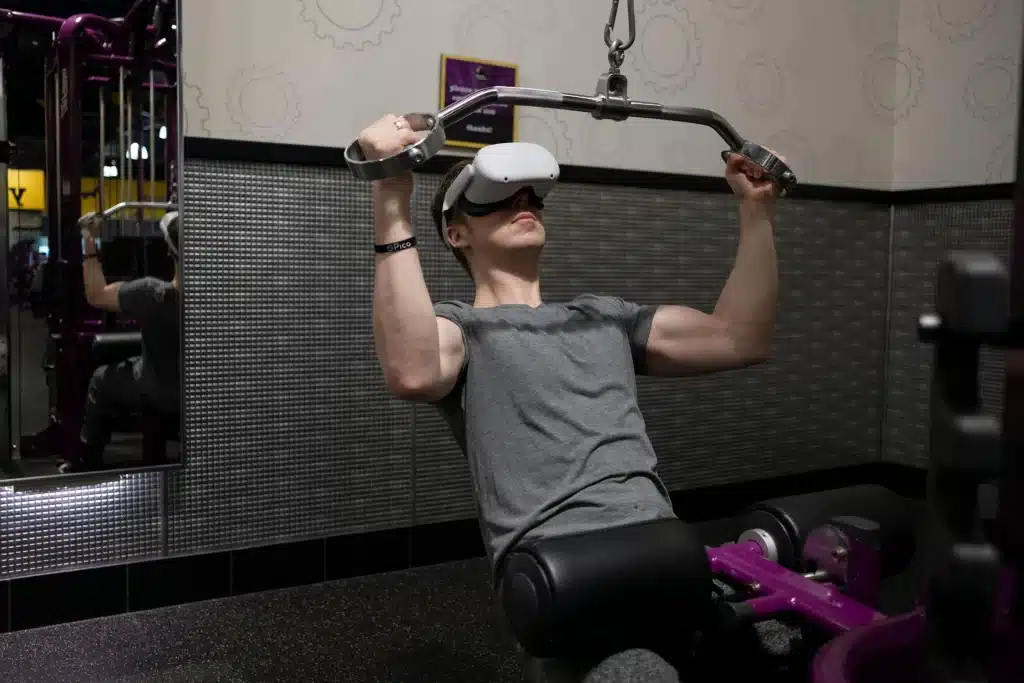Table of Contents
The fitness industry has undergone a remarkable transformation over the past few decades, adapting to the ever-changing needs and preferences of health-conscious individuals. As we look ahead to 2025, it’s crucial for fitness enthusiasts and industry professionals alike to stay informed about the emerging trends that will shape the future of fitness. In this article, we’ll explore the key trends that are set to revolutionize the way we approach our health and wellness goals, from personalized workouts and cutting-edge technology to holistic well-being and sustainable practices. By understanding these trends, we can better prepare ourselves to embrace the exciting opportunities and challenges that lie ahead in the world of fitness.
Personalized and Data-Driven Workouts
One of the most significant trends in the future of fitness is the rise of personalized and data-driven workouts. Advances in wearable technology, such as smartwatches and fitness trackers, have made it easier than ever to collect and analyze personal health data. These devices can monitor heart rate, sleep patterns, and physical activity levels, providing valuable insights into an individual’s overall health and fitness.
In 2025, we can expect to see even more sophisticated wearables that offer real-time performance tracking and feedback. These devices will be capable of measuring a wide range of biometric data, such as oxygen saturation levels, blood glucose levels, and even stress levels. This information will be used to create highly customized workout plans tailored to an individual’s specific goals, preferences, and limitations.
Moreover, the integration of artificial intelligence (AI) in fitness apps and virtual personal trainers will revolutionize the way we approach our workouts. AI-powered algorithms will analyze user data to provide personalized recommendations, adapt workouts based on progress and feedback, and offer real-time coaching and motivation. These virtual trainers will be accessible 24/7, making it easier for individuals to stay on track with their fitness goals, regardless of their busy schedules.
As data-driven workouts become more prevalent, we can expect to see a shift towards evidence-based fitness practices. Fitness professionals will increasingly rely on data analytics to design effective workout programs, monitor client progress, and optimize results. This data-driven approach will not only help individuals achieve their goals more efficiently but also contribute to the overall advancement of the fitness industry.
Virtual Reality and Augmented Reality Fitness

Another exciting trend in the future of fitness is the incorporation of virtual reality (VR) and augmented reality (AR) technologies. These immersive technologies have the potential to transform the way we experience and engage with fitness, making workouts more entertaining, interactive, and effective.
VR fitness apps and games will transport users to virtual environments where they can participate in a wide range of physical activities, from high-intensity interval training (HIIT) and dance workouts to rock climbing and martial arts. These immersive experiences will make workouts more engaging and enjoyable, increasing motivation and adherence to fitness routines.
AR, on the other hand, will enhance real-world workouts by overlaying digital information and visuals onto the user’s surroundings. For example, an AR running app could display virtual obstacles, checkpoints, and performance metrics along a real-world running route, gamifying the experience and encouraging users to push their limits.
The gamification of fitness through VR and AR will also pave the way for virtual group fitness classes and competitions. Users will be able to join virtual fitness communities, participate in live-streamed workouts led by top instructors, and compete against other users from around the world. This social aspect of VR and AR fitness will foster a sense of camaraderie and accountability, making it easier for individuals to stay motivated and committed to their fitness goals.
As VR and AR technologies continue to advance, we can expect to see more sophisticated and realistic fitness experiences that blur the line between the virtual and physical worlds. These technologies will not only make fitness more accessible and convenient but also provide a new level of immersion and engagement that traditional workouts cannot match.
Smart Home Gyms and Connected Equipment

The future of fitness is not just about wearables and virtual experiences; it’s also about the transformation of our physical fitness spaces. In 2025, smart home gyms and connected equipment will become increasingly popular, offering individuals the convenience and flexibility to exercise at home without compromising on quality or variety.
Smart home gym equipment, such as treadmills, stationary bikes, and strength training machines, will be equipped with advanced sensors, touchscreens, and internet connectivity. These features will allow users to access a wide range of workouts, track their progress, and receive personalized recommendations based on their fitness goals and preferences.
The integration of AI assistants and smartphones with smart home gym equipment will further enhance the user experience. Users will be able to control their workouts using voice commands, receive real-time form corrections and guidance, and sync their performance data across multiple devices and platforms.
Live-streaming and on-demand workouts will also play a significant role in the rise of smart home gyms. Users will have access to a vast library of video workouts led by top fitness instructors, covering a wide range of fitness styles and difficulty levels. This will allow individuals to enjoy the benefits of studio-quality workouts from the comfort of their own homes, without the need for expensive memberships or travel.
The convenience and accessibility of smart home gyms will be particularly appealing to busy professionals, parents, and individuals who live in areas with limited access to traditional fitness facilities. As more people embrace the flexibility and customization offered by smart home gyms, we can expect to see a shift in the fitness industry towards a more decentralized and personalized approach to exercise.
Mindfulness and Mental Well-being

In recent years, there has been a growing recognition of the importance of holistic wellness, which encompasses not just physical health but also mental and emotional well-being. As we look ahead to 2025, we can expect to see a greater emphasis on mindfulness and mental well-being in the fitness industry.
Mindfulness practices, such as meditation and breathwork, will become increasingly integrated into fitness routines. These practices help individuals develop greater self-awareness, reduce stress and anxiety, and cultivate a more positive mindset. Fitness apps and wearables will offer guided meditations, breathing exercises, and relaxation techniques to help users incorporate mindfulness into their daily lives.
The rise of mindful fitness will also lead to the development of more gentle and restorative workout styles that focus on stress reduction and mood enhancement. These workouts may include yoga, Pilates, Tai Chi, and other low-impact exercises that promote flexibility, balance, and relaxation. By emphasizing the mind-body connection, these workouts will help individuals achieve a greater sense of overall well-being and resilience.
In addition to mindful movement, the future of fitness will place a greater emphasis on recovery and rest. Adequate sleep, proper nutrition, and regular rest days will be recognized as essential components of a healthy and sustainable fitness routine. Fitness trackers and apps will provide personalized recommendations for recovery based on an individual’s activity levels, stress markers, and sleep patterns.
As mental health continues to be a pressing concern in society, the fitness industry will also play a role in promoting mental well-being through community support and education. Fitness professionals will receive training in mental health first aid, enabling them to identify and support individuals who may be struggling with mental health challenges. Fitness communities, both online and offline, will provide a safe space for individuals to connect, share their experiences, and support one another in their wellness journeys.
Sustainable and Eco-Friendly Fitness

As global awareness of environmental issues continues to grow, the fitness industry will increasingly prioritize sustainability and eco-friendliness in the years leading up to 2025. Consumers will demand more environmentally conscious fitness products and practices, driving the industry to adopt greener solutions.
One key area of focus will be sustainable workout gear and equipment. Brands will invest in the development of eco-friendly materials, such as recycled polyester, organic cotton, and biodegradable fabrics, to create high-performance workout clothing and accessories. Fitness equipment manufacturers will also explore the use of renewable materials and energy-efficient designs to reduce their environmental impact.
In addition to sustainable products, the fitness industry will see a rise in green fitness facilities and initiatives. Gyms and studios will incorporate eco-friendly features, such as solar panels, energy-efficient lighting, and water-saving fixtures, to minimize their carbon footprint. They may also implement recycling programs, composting initiatives, and partnerships with local environmental organizations to promote sustainability within their communities.
The future of fitness will also see a renewed appreciation for outdoor and nature-based workouts. As individuals seek to reconnect with the natural world and reduce their reliance on energy-consuming indoor facilities, activities such as hiking, trail running, and outdoor yoga will gain popularity. Fitness apps and communities will provide resources and support for individuals looking to explore these eco-friendly workout options.
By embracing sustainable and eco-friendly practices, the fitness industry can not only reduce its environmental impact but also inspire individuals to adopt more environmentally conscious lifestyles. As we move towards a greener future, the intersection of fitness and sustainability will become an increasingly important consideration for both businesses and consumers alike.
Community-Driven and Social Fitness

The future of fitness is not just about individual achievements; it’s also about the power of community and social connection. In 2025, we can expect to see a continued rise in community-driven and social fitness initiatives that bring people together around shared goals and experiences.
One of the key drivers of this trend will be the growth of online fitness communities and support groups. Social media platforms and dedicated fitness apps will provide spaces for individuals to connect with like-minded people, share their progress, and offer encouragement and accountability. These communities will span a wide range of fitness interests, from running and weightlifting to yoga and dance, allowing individuals to find support and motivation no matter their preferred workout style.
Fitness influencers and social media challenges will also play a significant role in the future of social fitness. These influencers will use their platforms to inspire and educate their followers, sharing workout tips, healthy recipes, and personal stories of transformation. They will also launch fitness challenges and virtual events that encourage participants to push their limits and celebrate their achievements together.
In addition to online communities, local fitness events and meetups will continue to be a popular way for individuals to connect and stay motivated. From group workouts in parks and beaches to charity fitness events and community health fairs, these in-person gatherings will provide opportunities for individuals to build relationships, learn from one another, and support local fitness businesses.
As the fitness industry becomes increasingly community-driven and social, it will foster a greater sense of belonging and purpose among participants. By tapping into the power of shared experiences and mutual support, individuals will be better equipped to overcome obstacles, celebrate successes, and achieve their long-term health and wellness goals.
Conclusion: The Future of Fitness Trends
The future of fitness in 2025 is set to be shaped by a range of exciting trends, from personalized and data-driven workouts to immersive virtual experiences and eco-friendly practices. As technology continues to advance and consumer preferences evolve, the fitness industry will need to adapt and innovate to meet the changing needs of health-conscious individuals. By embracing these trends and fostering a sense of community and support, the industry can empower individuals to take control of their health and wellness in new and transformative ways. As we look ahead to the future of fitness, one thing is clear: the possibilities are endless.
Jumpstart your journey to a healthier you with Eat Fit Fuel’s expert tips and delicious recipes – subscribe today!
Further Reading
For those interested in exploring more about the future of fitness and related trends, here are some valuable resources that cover a variety of aspects within the fitness and wellness industries:
- Top Fitness Industry Trends – Exploding Topics highlights significant trends such as the rise of home gyms, the popularity of mobile fitness apps, and the growing interest in calisthenics and wearable technology. These trends reflect the increasing demand for personalized and accessible fitness solutions. Read more at Exploding Topics.
- Wearable Technology and Personalized Fitness – Wearable fitness tech, including smartwatches and fitness trackers, continues to trend. These devices provide real-time data on performance, sleep, and nutrition, enhancing personal fitness regimes. The integration of AI is also expected to advance personalized workout plans. Explore more at Fitness Drum.






